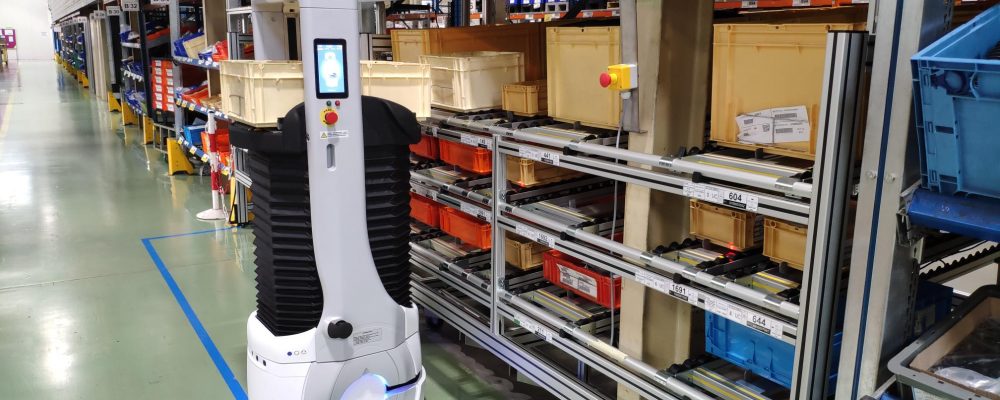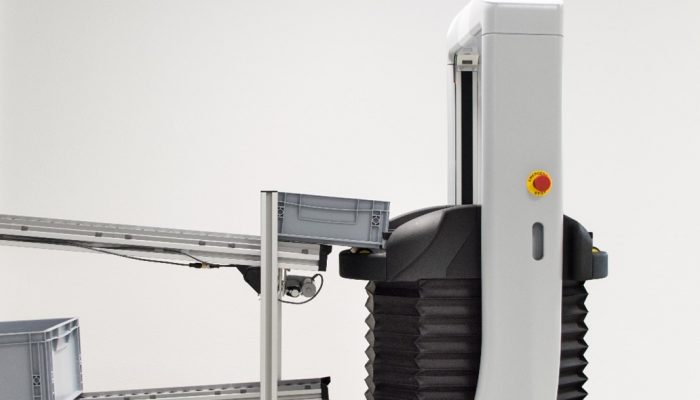
5 tips to facilitate the acceptance of your employees to the integration of Autonomous Mobile Robots
- Expertise
- Temps de lecture : 10 min
Collaborative robotics is a technology that is increasingly present in companies these days. It is all the more so as it easily integrates into a production circuit, a workplace or a team. Companies tend to turn to this solution because it allows its employees to have better working conditions and greater efficiency, without being replaced by a “robot”. But for this solution to be as effective as it can be, it must be accepted by the whole team.
For this, we have established a list of 5 tips to facilitate the acceptance of your employees to the integration of Autonomous Mobile Robots.
I. Preparing your employees for change
The key to good acceptance is understanding, and that is why communication with your collaborators is essential. It can go through, for example, an overall presentation of the solutions with a time for questions and answers, concrete examples and practical cases, or feedback.
The operator must understand that the mobile robot is an aid and not a replacement. It is therefore necessary to insist on the fact that it is a collaboration between human and machine. One needs the other and vice versa, all with the aim of creating harmony, to improve efficiency and working conditions. Here human know-how is valued because it is understood that the robot alone cannot accomplish the task with the experience and other qualities that only the operator has. Thus, it is no longer a question of substitution but of collaboration.

II. Involve your team in the project
One of the best methods to involve your collaborators in the project is to solicit them in the different key stages, at different levels of importance. It can be for example to include them in the process of choosing the name of the robot, or in the choice of the different missions / tasks that it will have to perform. Moreover, by explaining the advantages of the robot and the improvements it will bring to the team, as well as the disadvantages, the operators will be able to have an objective opinion and form their own opinion without feeling be under duress.
It is essential that your team does not have the feeling of being replaced or of losing importance. This is why training in the use of the robot is very useful and even essential: it will give each person the possibility of being autonomous in the management of unusual or urgent situations, or simply in understanding the functioning of the mobile robot. You will thus gain the confidence of your collaborators vis-à-vis this new change.
III. The choice of a solution with an ergonomic design and User Friendly
UX or User Experience refers to the quality of the experience experienced by the user in any situation involving interactions. It qualifies the overall experience felt when handling an interface, a technological device or more broadly any device or service. Its role is essential in the way the cobot is perceived. Indeed it can as much create mistrust if the latter, for example, has a physique that is too close to that of a man. Meanwhile, out of conviction, preferred to distance the design of its cobots from human beings to avoid any ambiguity. Indeed, the AMR remains a machine. However, it is important for the UX that the design of the robot is pleasant and friendly. Meanwhile cobots are therefore designed in their entirety (design, human-machine interface, etc.) so that the user feels safe and confident when near the robot.
In addition, whether visually (via screens, indicator lights, etc.), sounds (alarms, recorded voices, etc.) or haptic voice (force feedback, vibrations, etc.), cobots and operators must constantly exchange various information. in order to ensure effective and continuous collaboration over time. This is where ergonomics and design come into play because they are also essentially user-centric. They intervene mainly on the notions of ease of use, with for example a simple and intuitive screen interface, strategically positioned stop buttons, etc. But also on the notion of conviviality, affordance and in general, they favor the greatest transparency and speed in the communication between the two partners.
IV. An easy-to-use solution
Our mobile robots have been designed to integrate as easily and quickly as possible within a company and/or work team. This is why the solution is installed on your site directly by one of our teams, who will take care of the start-up from A to Z so as not to mobilize your employees. Once functional, the cobot is 100% autonomous and requires very little, if any, human intervention. In the event of an “unusual” situation, everything has been thought out so that any employee can stop the robot during a task using a visible and accessible emergency stop button. Simple push buttons allow you to manually move the robot if necessary.
The HMI or Human/Machine Interface refers to all the means and tools put in place to promote communication between a human being and a machine. It therefore facilitates use and interactions. For example, the screen located on each Meanwhile cobot allows interaction between the robot and the user in a direct, simple and efficient way. It was once again designed for the user and for navigation to be as intuitive as possible.

V. A secure solution
Safety is a key concept in the acceptance of an autonomous mobile robot within a team. Your employees must feel confident with the mobile robot and their cohabitation must be fluid to guarantee optimal satisfaction for everyone ! Again, training is essential. It should focus on two main elements :
- The security of the solution
Our cobots are equipped with numerous laser scanners, used to detect their environment and to allow them to react almost instantly in the event of an obstacle. They are also equipped with visible and accessible emergency stop buttons to stop or move the robot manually if necessary.
Our cobots are safe and secure, they have been designed in compliance with the Machinery Directive 2006/42/EC and according to the recommendations of the ISO 3691-4 standard. Each solution is C.E. certified and supplied with a complete risk analysis that takes into account the environment in which mobile robots operate. Meanwhile provides this risk analysis as a deliverable of the application, thus ensuring complete transparency on safety and environmental aspects.
- Behaviors to adopt
Faced with an autonomous mobile robot, people can have very different reactions. It is therefore necessary to explain what conduct to adopt. For example, do not try to stop the robot without using the buttons created for this purpose, do not block its traffic lane or its charging station… But also what to do in the event of a technical problem such as a power outage, a stopping in the production line…
The arrival of one or more autonomous mobile robots can disrupt your teams, this is why it is necessary to prepare all your collaborators upstream so that the integration takes place as well as possible and that acceptance is made. rapidly. By working step by step, the collaboration between human and AMR always takes place in a serene and pleasant way.